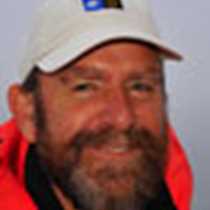Dartmouth, Devon, England
After leaving Portsmouth yesterday evening, we struck out west, through the Solent, the channel between the Isle of Wight and mainland Hampshire. At dusk we passed the Needles lighthouse, then followed the southern coast of England.
We woke to a clear blue sky and, aiming straight at the seemingly solid coast of Devon, slipped into the cunningly convoluted entrance of the River Dart. Once inside, the picturesque valley of Dartmouth was revealed, perfectly sheltered from the rigours of the Atlantic, and thus haven, harbour, and hamlet down through history.
The Dart drains Dartmoor, setting for the famous Hound of the Baskervilles. The valley was also home to Agatha Christie, prolific author of so many modern murder mysteries. But it is the solid geology of the county which gave us the name Devonian, for the red sandstone rocks which break down to fertile red Devon soils. These grew good corn, raised fat sheep with fine fleeces, and nourished the red Devon cattle whose milk still provides the clotted cream to attract modern pilgrims every summer.
Once anchored we were welcomed by the Town Crier in full scarlet regalia, then landed by Zodiac on the quayside for guided tours of the ancient town and its twisting alleyways. We visited St.Saviours with an original rood screen intact since the Reformation; passed the famous Butterwalk with its stone pillars and façade of wooden carvings, and followed the shore down to Bayards Cove, the quayside from which Mayflower and Speedwell set sail for the New World. Speedwell, a terminally leaky tub, turned back, leaving the Mayflower to complete the journey with just 102 original Puritans, the founding fathers of European America.
Emboldened by clear blue skies, we set off on longer guided walks in the afternoon: the most strenuous set out for the coast via a superb cliff walk; the botanists followed Karen out to the wooded headland for a sylvan stroll; and the historians went with Steve and David to visit St.Petrox.
This was originally a church dedicated to a 6th century Celtic monk, but because of its commanding position at the entrance to the harbour, was later fortified to castle and battery to defend against the dastardly French. Indeed
Dartmouth was a key departure point for thousands of troops and ships at the D-day landings which proved to be the turning point of World War II. This long naval tradition is maintained with HMS Britannia, the Royal Naval Training College on the hill behind the town, which overlooks all the modern bustle of yachts, ferries and marina.
From the warmth, shelter and fertility of this perfect English river valley, we will set out tomorrow to explore some of the wildest and windiest corners of western Britain.
After leaving Portsmouth yesterday evening, we struck out west, through the Solent, the channel between the Isle of Wight and mainland Hampshire. At dusk we passed the Needles lighthouse, then followed the southern coast of England.
We woke to a clear blue sky and, aiming straight at the seemingly solid coast of Devon, slipped into the cunningly convoluted entrance of the River Dart. Once inside, the picturesque valley of Dartmouth was revealed, perfectly sheltered from the rigours of the Atlantic, and thus haven, harbour, and hamlet down through history.
The Dart drains Dartmoor, setting for the famous Hound of the Baskervilles. The valley was also home to Agatha Christie, prolific author of so many modern murder mysteries. But it is the solid geology of the county which gave us the name Devonian, for the red sandstone rocks which break down to fertile red Devon soils. These grew good corn, raised fat sheep with fine fleeces, and nourished the red Devon cattle whose milk still provides the clotted cream to attract modern pilgrims every summer.
Once anchored we were welcomed by the Town Crier in full scarlet regalia, then landed by Zodiac on the quayside for guided tours of the ancient town and its twisting alleyways. We visited St.Saviours with an original rood screen intact since the Reformation; passed the famous Butterwalk with its stone pillars and façade of wooden carvings, and followed the shore down to Bayards Cove, the quayside from which Mayflower and Speedwell set sail for the New World. Speedwell, a terminally leaky tub, turned back, leaving the Mayflower to complete the journey with just 102 original Puritans, the founding fathers of European America.
Emboldened by clear blue skies, we set off on longer guided walks in the afternoon: the most strenuous set out for the coast via a superb cliff walk; the botanists followed Karen out to the wooded headland for a sylvan stroll; and the historians went with Steve and David to visit St.Petrox.
This was originally a church dedicated to a 6th century Celtic monk, but because of its commanding position at the entrance to the harbour, was later fortified to castle and battery to defend against the dastardly French. Indeed
Dartmouth was a key departure point for thousands of troops and ships at the D-day landings which proved to be the turning point of World War II. This long naval tradition is maintained with HMS Britannia, the Royal Naval Training College on the hill behind the town, which overlooks all the modern bustle of yachts, ferries and marina.
From the warmth, shelter and fertility of this perfect English river valley, we will set out tomorrow to explore some of the wildest and windiest corners of western Britain.




